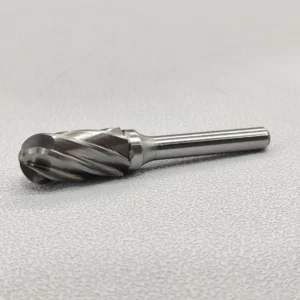How to Choose and Use Burr Bits for Steel: A Comprehensive Guide
Lorem ipsum dolor sit amet, consectetur adipiscing elit. Ut elit tellus, luctus nec ullamcorper mattis, pulvinar dapibus leo.
Table of Contents
ToggleBurr Bits for Steel
When it comes to working with steel, having the right tools is essential. One tool that is commonly used in metalworking is the burr bit. Burr bits are specially designed to remove material from steel, leaving a clean and precise finish. However, with so many options available in the market, it can be overwhelming to choose the right burr bit for your specific needs. In this comprehensive guide, we will walk you through the process of selecting and using burr bits for steel, ensuring that you make an informed decision.
Before delving into the details, let’s highlight some of the key benefits of burr bits for steel and their application areas that customers usually consider during their purchase. Burr bits are renowned for their durability and ability to withstand the high temperatures generated during metalworking processes. This makes them ideal for heavy-duty tasks in industries such as engineering, fabrication, and construction. Moreover, burr bits are designed to remove burrs, sharp edges, and excess material from steel, resulting in a smooth and polished surface. This makes them essential for precision work in industries such as automotive, aerospace, and electronics. By focusing on these benefits and applications, customers can make an informed decision based on their specific requirements.
Now, let’s dive into the criteria you should consider when choosing burr bits for steel. The first factor to assess is the material of the burr bit. High-speed steel (HSS) burr bits are the most commonly used and are suitable for general purpose applications. They offer a good balance between durability and cost-effectiveness. For more demanding tasks, such as working with hardened steel or stainless steel, carbide burr bits are highly recommended. Carbide burr bits are made from tungsten carbide, which is incredibly hard and can withstand the high heat generated when working with these tough materials.
Next, consider the shape and size of the burr bit. Burr bits come in various shapes, including cylindrical, ball, tree, and flame-shaped. The choice of shape depends on the specific task at hand. For instance, cylindrical and ball-shaped burr bits are great for deburring holes and edges, while tree-shaped burr bits are ideal for accessing tight corners and removing material from curved surfaces. When it comes to size, ensure that the burr bit is compatible with your drill or rotary tool. It should fit securely and allow for smooth and precise operation.
Another important aspect to consider is the type of cut that the burr bit offers. There are three main types of cuts: single cut, double cut, and diamond cut. Single cut burr bits have a single set of teeth and are suitable for light material removal. Double cut burr bits have two sets of teeth arranged in a crossed pattern, providing faster and more aggressive material removal. Diamond cut burr bits have a diamond-shaped pattern and are particularly efficient for working with hardened steel and other tough materials.
Now that you have chosen the right burr bit for your steelwork, it is important to know how to use it effectively. Start by ensuring that you have the appropriate safety gear, such as safety glasses and gloves, to protect yourself during the metalworking process. Securely attach the burr bit to your drill or rotary tool and adjust the speed according to the task and the type of burr bit you are using.
When operating the burr bit, apply steady and even pressure to the steel surface. Let the burr bit do the work, avoiding excessive force that may result in overheating or damage to both the bit and the steel. Move the burr bit in a smooth and controlled manner, following the desired shape and contours. For best results, periodically withdraw the burr bit to remove accumulated debris and prevent overheating.
After completing the metalworking task, ensure that you clean the burr bit thoroughly. This will maintain its performance and lifespan. Use a brush to remove any swarf or debris from the bit, and apply a light coating of lubricant to prevent rusting. Store the burr bit in a clean and dry place, ensuring that it is protected from damage.
In conclusion, choosing and using burr bits for steel requires careful consideration of various factors. By assessing the material, shape, size, and type of cut, you can find the perfect burr bit for your needs. Whether it’s deburring, material removal, or shaping steel, a well-selected burr bit will ensure that you achieve the desired results. Remember to always prioritize safety and maintain your burr bits properly for optimal performance. With these tips in mind, you can confidently undertake your steelwork projects and achieve professional-quality results. So, what are you waiting for? Get your burr bits for steel today and unleash your metalworking potential.

